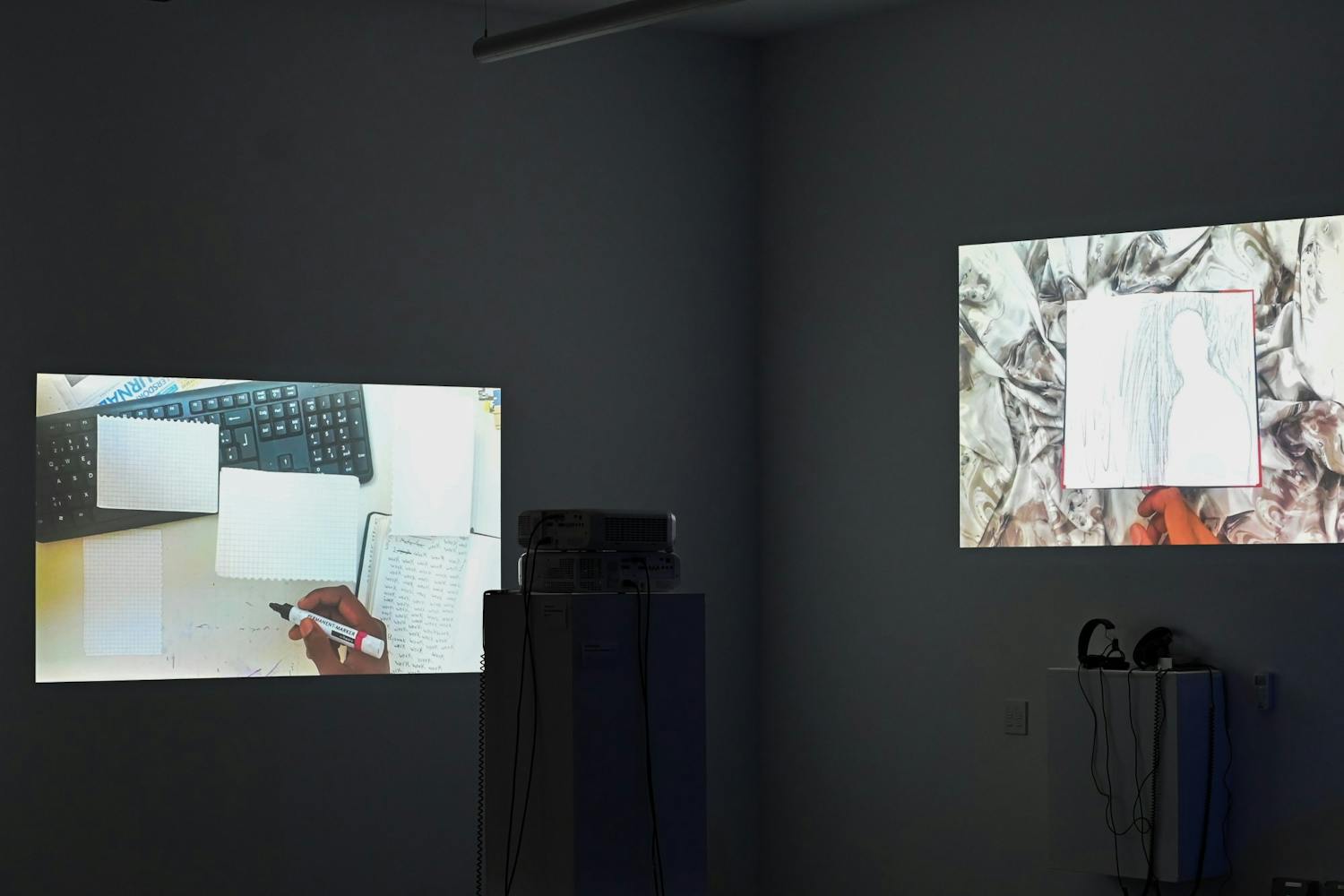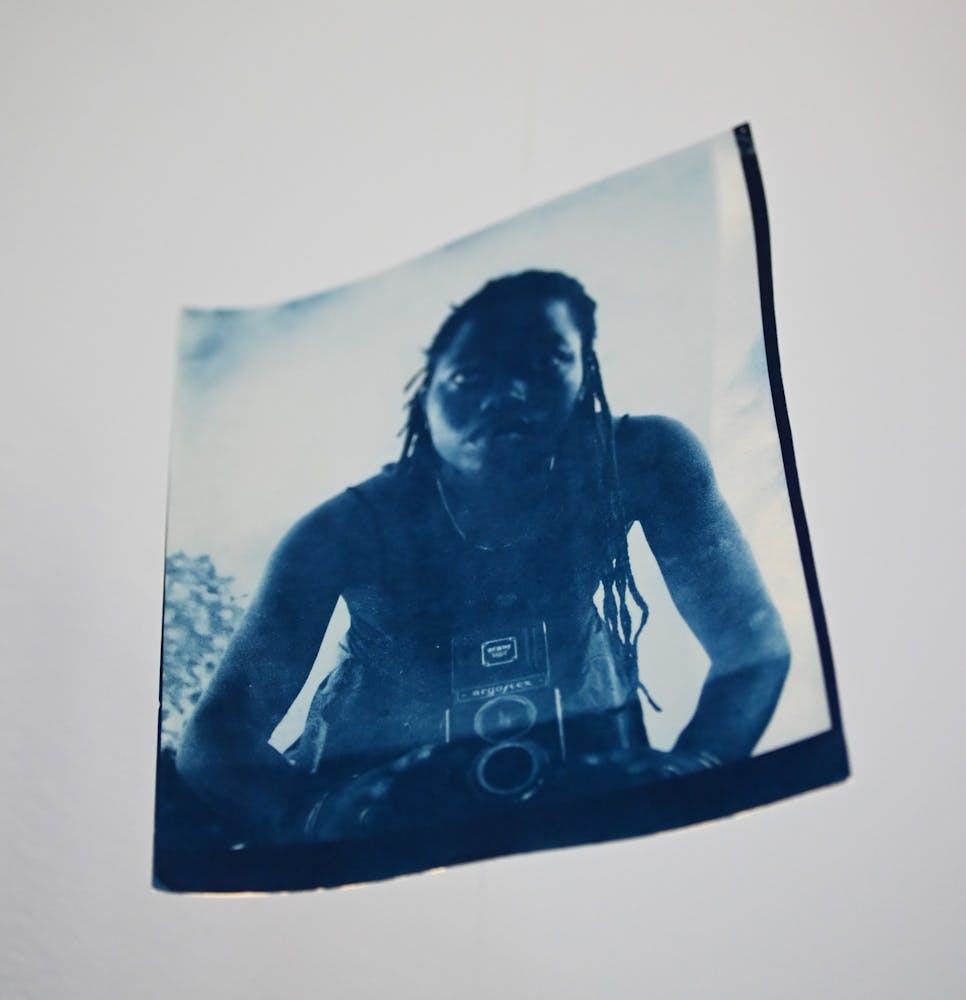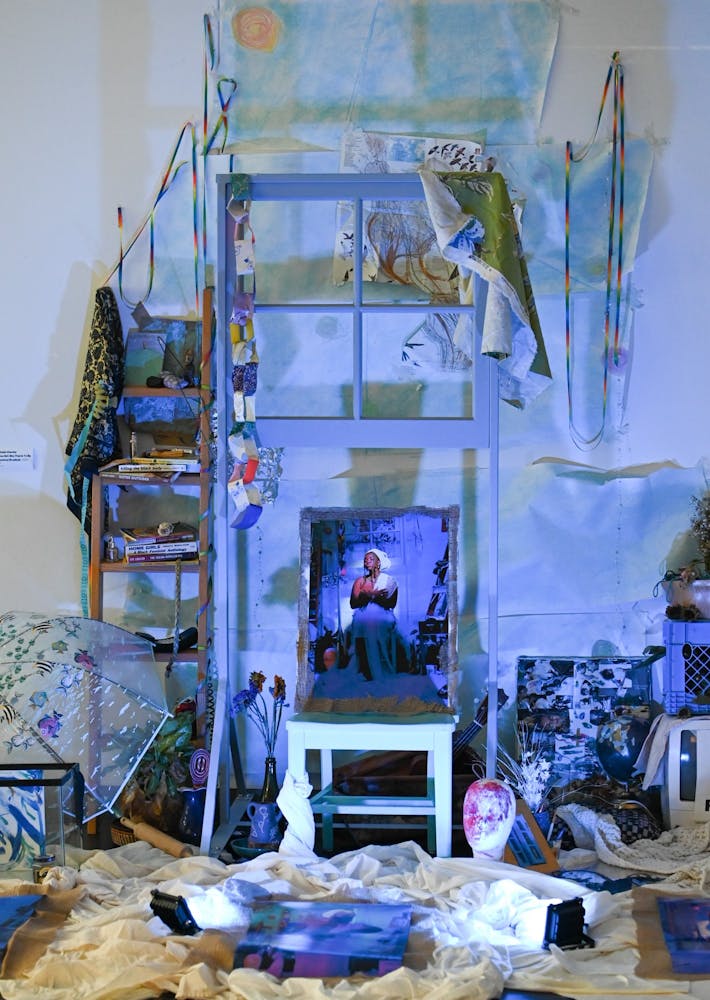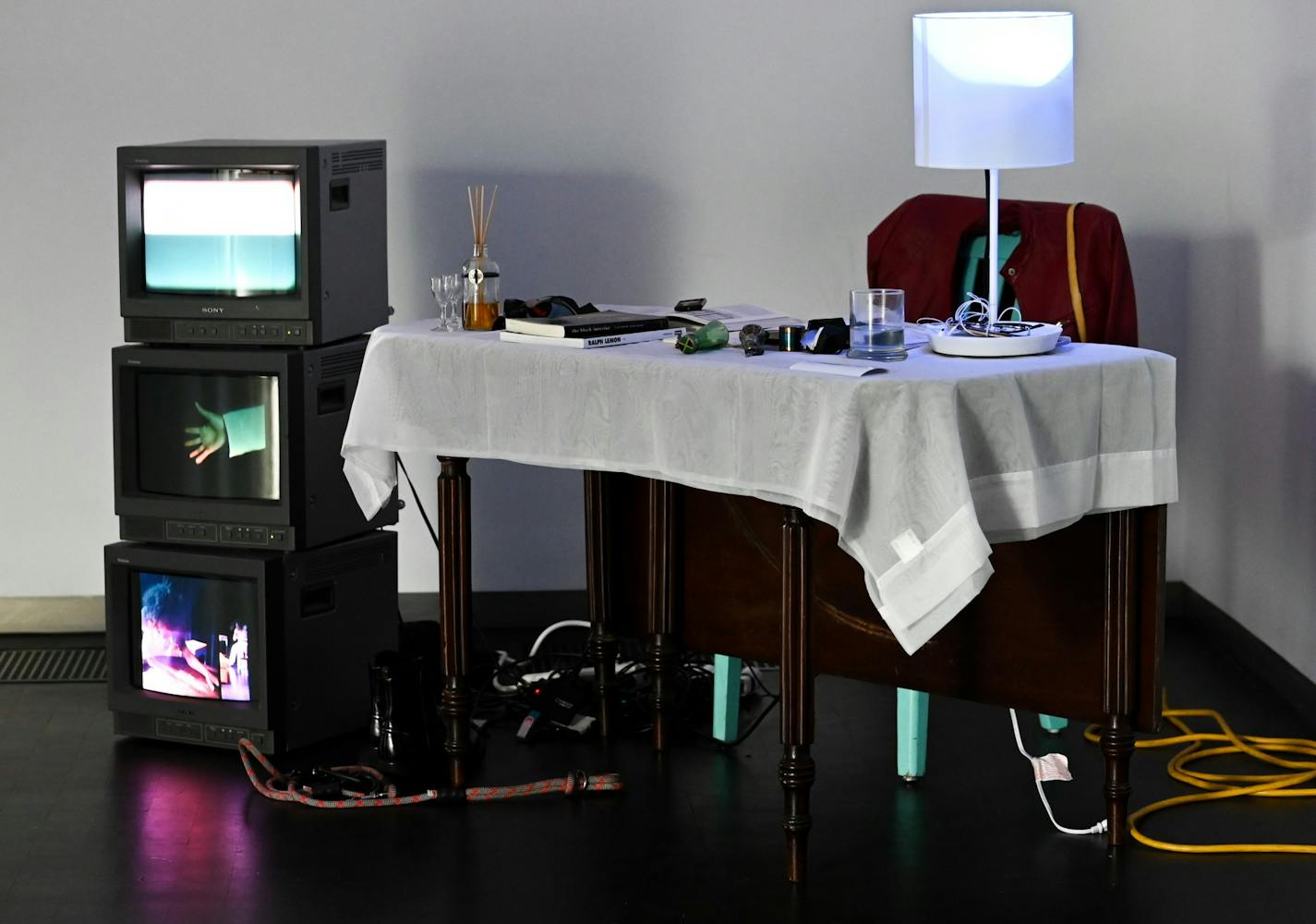“Anticulation” is the latest art exhibition to be held in the CoLab space at the Lewis Center for the Arts. The show’s title “is a word, created for this show, that aims to capture the particularities of black, gay, and black gay archival practices,” according to the curatorial statement. The Daily Princetonian asked the show’s curator, Omar Jason Farah ’23, to elaborate on some of these themes and also asked some of the artists about their work in relation to Farah’s notion of anticulation. “Anticulation” will be on display in the Lewis Center for the Arts until Oct. 13.
Farah is a managing editor for the ‘Prince.’
The following exchanges were in the form of written comments and have been edited for length and clarity.
The Daily Princetonian: Self-expression has long been seen as one of art’s central purposes, and this has often been tied to ideas of the artist as individual genius. When it comes to artists from marginalized communities, what do you view as the relationship between such notions of self-expression and self-expression as a contribution to a greater collective canon?
Omar Jason Farah: The question of how cultural production differs on the margins has been a focus of both shows that I have presented at Princeton as well as most of my research. What I have come to understand is that, despite the allure of constructing aesthetic criteria and establishing technical motifs, it is a venture that is ultimately futile and limiting.
There is a Black artistic tradition, there is a queer artistic tradition, there is a Black queer artistic tradition, and so on, but these traditions live in the social complexity of those subjectivities and not the structure of those communities’ creative outputs. As a show, despite the use of common mediums, “Anticulation” has tremendous visual depth on almost all spectra.
DP: Articulation and anticipation. You combine these two words into the name of the show “Anticulation.” Can you expand on this notion of creating both for the self and the future — either one’s future self or one’s descendants?
OF: I spent the summer deep in Colin Robinson’s archive. Robinson, alongside his friends Essex Hemphill, Joseph Beam, Marlon Riggs, and others, was part of a prolific and historic moment of cultural production in Black Queer New York City. Across their work, and in general as people, this cohort engaged in rigorous and intentional self-archival — even when faced with rejection, failure, and relative obscurity.

They knew, I believe, that their words and their films, and their theory would be vital for people today. “Anticulation” is an affirmation of that faith. It is a call back in time to express gratitude and wonder at the foresight of these incredible figures who articulated themselves even when those around them were uninterested because they anticipated me, they anticipated the audience that came out to this show, they anticipated a world that might lend an attentive ear.
DP: Do you feel a certain urgency in engaging in this anticipatory articulation, this anticulation?
OF: The cool thing about this show is that in introducing this framework I am identifying particular historical works as anticulation, but the show itself is also a practice in anticulation. All of my artists’ practices, in their own way, are forms of anticulation. So, yes, I can say that historical anticulation was urgent, as all self-expression is — if you are at all interesting — but I am assured of that because this show was a personal form of anticulation, and I felt that urgency myself. It is what drives all my work.
DP: Where do you find the source of this urgency?

OF: For me, it is related to the marginality you brought up earlier. I think that one of the important particularities of marginal work is that although one can never represent [their community] — and the question of representation is itself narrow and ignorant — identity on the margin often asks this of you. So unlike people at the social center, who are never asked who they are and where they come from, we are always saddled with those questions. Funny enough, it breeds homogeny at the center and forces a certain individualism for those of us farther out.
DP: The archive, artwork, and the self all have complex relationships with materiality. What do you find at the intersection of art as an archive of the self, of a broader community?
OF: At that intersection, I personally find a lifetime of work. It is the intractable question: How do we transpose ourselves into forms and representations that convey us? What I can say is that “Anticulation” offers a wide array of answers to the question. The artists each took very different approaches to considering archival. I think Aishah Balogun, Nathalie Charles, and Erin Macanze’s work raised significant questions about the camera’s capacity for self-documentation. But across the board, my artists give you plenty to consider around the question of archive and particularly archive on the margin.
DP: How did you see this idea of anticulation embodied in your creative process or in your artwork included in this show?
Erin Macanze: My recent work engages a lot with archival temporality and the rupture of the passing down of ancestral knowledge. To actively go through archival processes, in a process of rediscovering who you are in conjunction with shared histories, is key to the framework of anticulation.
Storm Stokes: We were inspired by a discussion of queering time as a method of memory and existence. We wanted to create a structured improv that used a strategic cycling of language and movement to illustrate a collective and eternal consciousness. As dancers in other spaces on campus, it was a great opportunity for us to explore performance amidst visual aesthetics.
Azi Jones: Having the chance to put summer-funded work that I feel might have otherwise sat on my desktop in a show alongside peers whose work I really admire is something I think Princeton needs so much more of. Students must be able to have better access to the spaces they need in order to do more stuff like this.
Collin Riggins: I view my work, “a n d y o u w i l l f i n d ,” as doing a few things. First, it was a sonic experiment. John Coltrane is probably most known for his mastery of free jazz, which basically attempted to disrupt structure and tempo through improvisation. If you listen, it sounds much different than cool jazz or bebop or any of those earlier forms which were much smoother. So, when folks heard Coltrane’s free jazz, many cats realized they couldn’t dance to it. It was too damn confusing.
To me, I always thought that was some radical sugar honey iced tea — to throw a wrench in convention and make people sit with that. But I also questioned whether the idea that you couldn’t dance to Trane was entirely true. So, I had my good friend Khari perform an improvisational dance to contemporary hip-hop music that I felt captured the militancy of free jazz. When I synced his movement to Trane’s Ascension, I could really see the ways in which they labored in harmony. They ebbed and flowed together, working as a unit. The thing that brought them together was their radical freedom in expression and refusal to abide by structure.
“a n d y o u w i l l f i n d ” was also a tribute to black militancy more broadly. This is where the idea of anticulation really comes in. The ways in which the tradition of black militancy is captured in the archive — which is to say American consciousness — often demonizes black thought. You would think that folks like Fred Hampton were driven by an intense hate and intense hate alone. That is definitely an easier way to understand his ultimate murder by the FBI than to actually confront the insidious legacy of white supremacy.
Yet, when you actually engage with this archival materiality, you find the opposite to be true. These thinkers — thinkers that many of us are still trying to catch up to — were driven by the opposite: an unyielding love. They articulated this love in such profound ways and actively anticipated and worked towards a world that could hold such love in abundance. My film attempts to take footage of black militancy as it exists in the archive and center the love that undergirds it. I hope that this practice can inspire folks to really consider how narrative functions in collective American memory.
José Pablo Fernández García is a senior from Ohio and a head editor for The Prospect at the ‘Prince.’ He can be reached at jpgarcia@princeton.edu.














